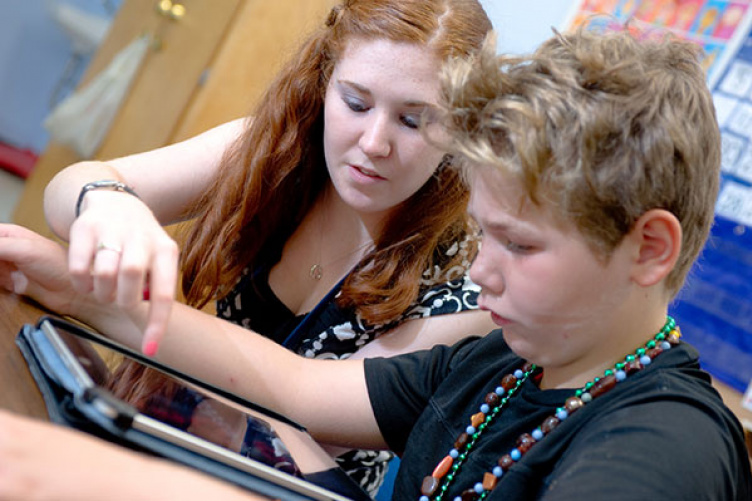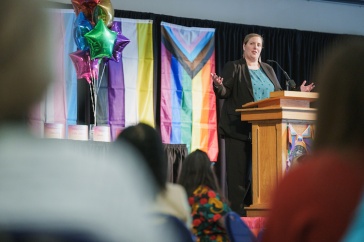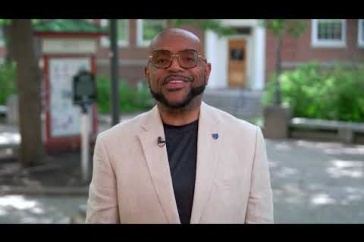
Theo-Steelman Fellow Christine Curtin ’13, an occupational therapy major, assists a student from Crotched Mountain School as he chooses an educational iPad app.
Christine Curtin ’13 has a summer gig that sounds too good to be true: Play games on an iPad, and help kids do the same. Curtin even scored a competitive fellowship for this sweet summertime job.
The devil, of course, is in the details. Curtin, an occupational therapy major, has an internship with Crotched Mountain School in Greenfield, N.H., where she is helping teachers select iPad applications that help students meet their individual academic goals while supporting their physical, developmental, genetic and emotional disabilities. Her internship, under the mentorship of Sajay Arthanat, assistant professor of occupational therapy, is supported by the Theo-Steelman Fellowship, awarded to a junior in the College of Health and Human Services to complete a summer service project or internship.
Curtin’s work expands on a Hamel Center for Undergraduate Research-funded project she began with Arthanat last summer at the Crotched Mountain School. As the iPad has gained in popularity as an educational tool for students with disabilities – “It’s become the tool for assistive technology,” says Arthanat – student and mentor wondered how to help teachers choose the best apps for their individual students.
|
Curtin and her UNH faculty mentor Sajay Arthanat are creating protocols for selecting iPad apps that address the unique learning needs of students with disabilities. |
For students with disabilities, the choice is far more complex than simply reading ratings in the iTunes store. Teachers’ evaluation must go beyond an app’s educational suitability to the many factors that affect how a student with special needs interacts with it. Does the app require touch sensitivity or finger dexterity? Does the user need full visual capacity? And, of particular concern to students with Autism spectrum disorders, will the dings, beeps or flashing lights of an app distract the student from the learning process?
“One app may have too much sensory output, or too little,” Curtin says, adding that for one student, an audible “ding” after a correct answer was effective where one after a wrong answer ended the game with the student’s frustration.
“There has to be a better science for how to select apps for students with multiple developmental disabilities,” Arthanat adds. “We’re trying to create a very systematic approach to app selection.”
Working with teachers and seven students between the ages of 8 and 12, Curtin developed and tested an evaluation process by which teachers can select iPad apps based on students’ individual needs, skills and interests. All summer, she’s been monitoring and documenting students’ academic engagement and performance to test this selection protocol.
“This is a very important study. There’s tremendous buzz out there about iPads, but it’s mostly anecdotal,” says David Kontak, director of assistive technology and Curtin’s supervisor at CMS. He heaps praise on Curtin’s work. “Christine has been an ideal intern – she’s handled everything with such thoroughness and professionalism.”
Curtin, in turn, lauds the vision of donors David C. Steelman and Dr. Virginia Theo-Steelman, whom she met at a dinner when she was awarded the fellowship. Without their support, Curtin would have had to take a pass on the unpaid project at CMS to take a paying job. “Their compassion to want to help and give back to the students was so inspirational,” she says.
For more information about the Theo-Steelman Fellowship, go to http://www.chhs.unh.edu/www.chhs.unh.edu/fs/steelman2012.
Originally published by:
UNH Today


















































